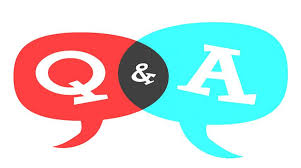Q&A with Anne

Q. When did you start to write?
A. I have been writing since the age of seven, when I started writing, doodling, and collecting dried flowers and leaves in a red leather diary. When I wrote a play about Johnny Tremain for my fourth grade class, my teacher sweetly said, “I think you’ve got what it takes to be a writer.” My heart sank. I really wanted to be either an archeologist or a doctor. It’s a good thing I finally got steered in the right/write direction. The worlds of archeology and medicine are much better for it, as well.
Q. What influences led you to choose writing as a career… or part-time career?
A. My fourth grade teacher, my stepmother, my professors, and most important, the inner itch I can’t scratch. I do not see writing as a career, really. It is just something I love to do. Something I have to do, even if no one reads another word that I write.
Q. What does your writing day look like?
A. Because of my work in our business and my teaching, I can only carve out two hours on weekdays, usually between 8 and 10 a.m. On weekends, I’ll try to write a little longer, but “life” has a way of butting in. In any case, I always meditate first to calm my mind, slow down racing thoughts so that it’s easier to concentrate. I bring a mug of hot tea into my study and then write “Morning Pages” (based on Julia Cameron’s The Artist’s Way) for about 20-25 minutes to loosen up and stretch before I get into the project at hand. I try to dedicate one day a week for sending out at least one manuscript. I keep a small notebook in my purse, so that I can jot down ideas when I’m doing errands or standing in line at the Post Office. Even though I may not be at a desk or tapping on a keyboard, I’m always “writing.” I believe it was Henry James who wrote, “A writer is someone upon whom nothing is lost.”
Q. When you begin writing a story, what do you think of first? Do you plot first? What is it that gets you motivated to writing a story?
A. Each story is inspired differently: one may come from an image (e.g. a kitten sleeping in a laundramat dryer); another from a strong memory (e.g. my mother’s face lit by a sparkler on the Fourth of July when I was four years old); yet another from watching a chunky boy try on sweaters at J.C. Penney’s (this boy morphed into Rafael of The Lunch Thief). I do not plot first. I tend to get to know my main character first. He or she will let me know the problem that needs to be confronted. Usually there is a sense of urgency that pushes me to begin writing the story. If the urgency is not there, I file it away in my “Ideas for Stories” folder.
Q. What kinds of things inspire you to write?
A. The shredding clouds across the moon. A boy with green hair and nose rings buying taquitos at the cash register of a convenience store (what is his secret? I wonder). A young father riding his bike around the block several times to put his baby to sleep. An overheard conversation that begins with “No way am I gonna tell her the truth!” Or maybe it’s a feeling welling up from deep in my heart that turns into an inner proclamation: “Now it’s time to get this story down!” Or I’ll read something in the newspaper or online about some extraordinary act by an ordinary kid: rescuing a cat, raising money for earthquake victims, or inventing a better mousetrap (one that doesn’t kill the mouse). I’m inspired by kids who exhibit their finest selves. The Lunch Thief is about a boy who thinks twice before he acts, who sees the other side of the problem and resolves it with compassion.
Q. What are your current projects?
Keep writing and learning. I have an early middle grade novel that I’m revising along with three picture books. Because I’m constantly in the learning mode, I keep putting myself through self-study courses. And, of course, I read, read, read.
